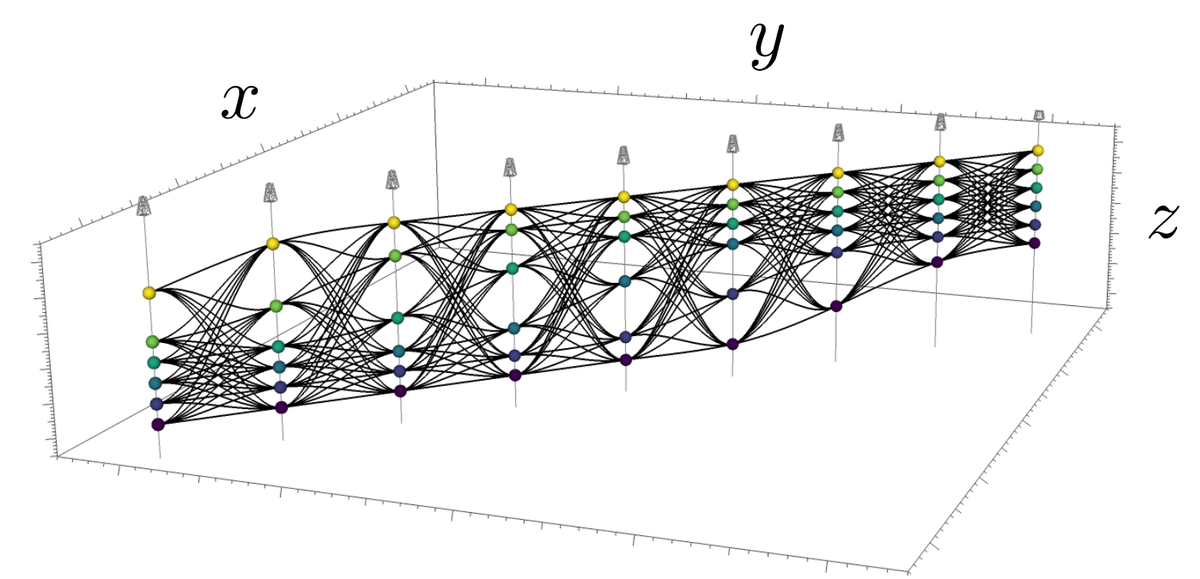Computer-assisted stratigraphic multi-well correlation
Computer-assisted stratigraphic correlations enable to test every possible scenario (see the gif). Their geological consistency is mainly based on the principle of correlation (i.e., their geological likelihood), used to compute numerical cost for each scenario. According to the principle of correlation, low (respectively high) correlation costs correspond to geological likely (respectively unlikely) scenarios. Therefore, this computer-assisted approach classifies possible scenarios according to their geological consistency (i.e., numerical cost) and return the best scenario (Hale, 2013; Waterman and Raymond, 1987) or n-the best scenarios to quantify the uncertainties on the correlations (Caumon et al., 2024; Pels et al., 1996). Finally, it allows assessing the correlation uncertainty by comparing multiple scenarios having the lowest correlation costs (e.g., Baville, 2022; Edwards, 2017; Lallier, 2012). The multiple scenarios are classified according to their geological likelihood, but this likelihood is given by a correlation cost computed based on a principle of correlation.

